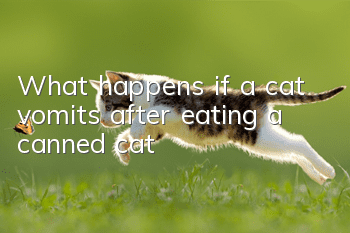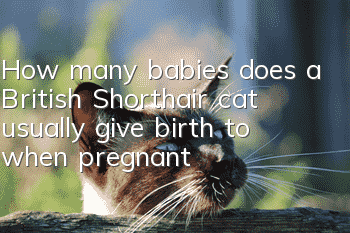Symptoms and treatments of common eye diseases in Ragdoll cats

It is said that the eyes are the windows to the soul, and this statement can also be applied to Ragdoll cats. The eyes are also important visual and sensory organs for Ragdoll cats. People can judge the mood of Ragdoll cats through the color and state of their eyes. However, Ragdoll cats often encounter eye diseases throughout their lives.
1. Retinal detachment
What a scary name! In fact, this is indeed a very serious disease. Assume that the eye is a camera, and the retina in the eye is like the film of the camera, which is where the object is imaged. As the imaging center of the eye, if this disease occurs and is not treated in time, it is likely that your Ragdoll cat will have to live in the dark from now on.
Cause: Retinal detachment can be caused by injuries, infectious diseases, genetics or unbalanced diet.
Symptoms: No pain or itching, but the things I see are different from usual ones, twisting around like twists and turns.
Trauma causes retinal photoreceptor cells to degenerate and even peel off.
I would like to remind everyone here that please pay attention to your eyes and do not think that this is a disease that only Ragdoll cats get. Because the probability of this disease happening to people is also very high, especially girls, if you have the habit of smoking; if you have to work in front of a computer every day; if you wear contact lenses, then pay more attention to your eyes. If you find that your vision suddenly decreases or the images in front of you are distorted, please go to the hospital for a check-up.
2. Conjunctivitis
The thin membrane above the white eyeball is called conjunctiva. Conjunctivitis is a common disease. Ragdoll cats living in newly renovated houses and families with poor indoor hygiene often suffer from this condition. Disease appears.
Cause: Caused by bacterial and viral infections, trauma, allergies, irritation from drugs or plants, garbage, dust, etc.
Symptoms: Eye droppings, constant blinking, tears, and exposure of the nictitating membrane. In severe cases, it can also cause swelling of the conjunctiva. There are symptoms of feline viral rhinotracheitis, feline cold bacterial infection and other diseases.
If the disease causing conjunctivitis is serious, treatment must be given first. Remove the dirt around the eyes, prescribe eye drops from the hospital, and apply eye drops to the cat according to the doctor's instructions. If you have a tendency to scratch your eyes, use an Elizabethan collar to prevent it.
If there is more than one cat in the house, the small towel used by the sick Ragdoll cat should be separated from that of other Ragdoll cats, and should be disinfected frequently.
3. Glaucoma
Cause: The cause of glaucoma is an increase in the anterior chamber fluid between the cornea and the lens, causing an increase in intraocular pressure. In addition, if the Ragdoll cat’s eyes bleed internally or the eye fluid cannot circulate due to various reasons, it can also cause glaucoma..
Symptoms: enlarged eyes, turbid cornea, etc.
There are medical treatments for glaucoma, such as eye drops, etc., but this depends on the severity of the glaucoma. If in addition to high intraocular pressure, eye infection or even pus accumulates, surgery is a quicker solution. .
4. Keratitis
Some friends think that keratitis and conjunctivitis are the same thing, but they are not. The conjunctiva is the outer layer of the white part of the eye, and the cornea is the transparent tissue at the front of the eye. Because the cornea is in direct contact with the outside world, there is a greater chance of infection.
Cause: Incorrect eyelashes, trauma, entropion or conjunctivitis can all lead to corneal inflammation.
Symptoms: Eye pain, watery eyes, cloudy and white cornea (but it is different from cataracts).
The general approach is to use a warm towel to apply lightly on the eyelids of the Ragdoll cat. This can promote blood circulation, and then treat it with some antibiotic ointment prescribed by a pet doctor.
Ragdoll cats with vitamin A deficiency and malnutrition often develop corneal softening.
5. Cataract
The crystal becomes white and opaque due to congenital or acquired reasons. Often occurs in elderly cats. Symptoms that easily make the eyes of Ragdoll cats turn white and opaque.
Treatment method: The common treatment for cataracts is to perform surgery to remove the opaque part so that the Ragdoll cat can regain its vision.
6. Epiphora
Looking at the name, you can tell that it must be a disease related to tears. The corners of some Ragdoll cats are always wet, as if tears are flowing out. Lacrima refers to excessive tearing, such as when crying or eye inflammation occurs; epiphora refers to an abnormal tearing phenomenon.
Cause: excessive tear secretion or blocked tear ducts.
Symptoms: The hair under the Ragdoll cat’s eyes is dyed dark brown.
Never use eye ointments or eye drops on Ragdoll cats casually. You must find a professional doctor to prescribe eye drops.
This eye disease may be related to eye allergies or respiratory infections. Not only Ragdoll cats will suffer from this disease, but Persian cats and exotic short-haired cats (details are introduced) are also high-risk cat groups.
The eye diseases of Ragdoll cats must be taken seriously. Pay more attention to caring for the eyes to prevent hair from getting into the eyes. Wash the face every day. Do not leave eye feces in the eyes for too long. Use eye drops regularly for cats. When abnormalities appear in the eyes of Ragdoll cats, they should be sent to the doctor in time to avoid delaying the condition.
- The best time and precautions for neutering Maine Coon cats
- What should you do if your cat has a cold and sneezes?
- Can a male cat be neutered when he is in estrus?
- How long does it take to cook chicken breast for cats?
- Can pregnant blue cats be fed amoxicillin?
- What are the symptoms of early pregnancy in cats?
- Why vets won’t let cats eat raw meat
- Can kittens that are one and a half months old undergo external deworming?
- What should you pay attention to after neutering a kitten?
- What should I do if my kitten won’t suck milk after birth?



